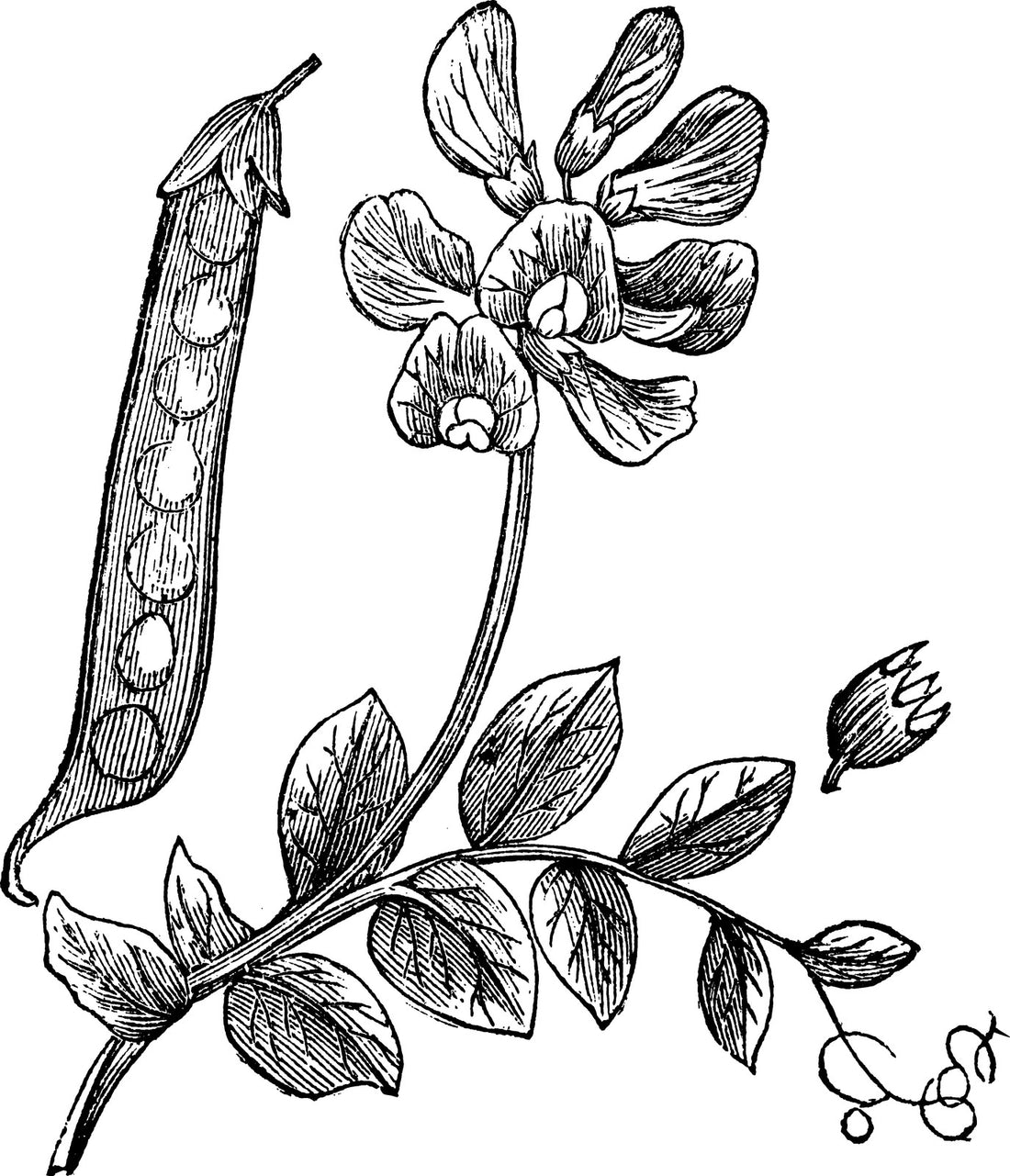“Oh Latin, oh Latin, we aspire to your greatness and yet don’t understand thee.” – Origins unknown (ok, we made it up)
Latin is the language of science, and peas have the great distinction (slight misfortune?) of being named Pisum Sativum. Sounds fancy, right? Thankfully, we just call them peas...although, the thought of striding into your local grocer, head held high, asking for a pint of plump Pisum Sativum does have a certain appeal.
As consumers have come to know them, basically there are three different varieties of peas ~ Snow Peas, Sugar Snap Peas, and Garden Peas. They are all Pisum Sativum, but different varieties ~ and even within those varieties there are 20+ different types of peas, more on this later.

Snow Peas have a tiny fruit and edible pods and are awesome stir fried. Sugar Snap Peas are amazing raw with an edible pod and sweet fruit that is between the size of the Snow Pea and the Garden Pea. And then there are Garden Peas, the ubiquitous childhood side dish oft hidden in mashed potatoes. When I was a kid, we had a garden in our backyard where we would pick and eat Garden Peas fresh off the vine. The pods are not particularly edible (at least our dog, Ellie, didn’t think so), but the little green fruit inside was amazing – sweet, earthy, round, perfect.
So, you might ask, what kind of divine magic makes the “Split Pea” and is it yet another variety? In fact, it is not another variety. Instead a Split Pea is simply…wait for it…a dried Garden Pea. If you patiently resist the urge to harvest, the pod and its cozy inhabitants will dry on the vine. Once you remove the dried pod and the skin of the dried pea, it will split in half at the cotyledon (more Latin fun) and voila, you have a Split Pea. Naturally, your next question is, why on earth would you wait for it to dry when you could have eaten a sweet ripe pea, like, two weeks ago. Ah, well, this is where the magic happens.
Consistent with so many other things in nature, you won’t be surprised to learn that, in this story, the Sun is the magician. As the heat of the Sun evaporates the water in the pea, the nutrients, protein and fiber get more and more concentrated until you have a little powerhouse superfood. In fact, a cup of dried Split Peas has 5x more plant protein and fiber than a cup of its younger plumper self. Let’s say that again (for dramatic effect), Split Peas have 5x more plant protein and fiber.

Now, there is one more mystery to unravel. If peas are green, how do you get yellow peas (the ones you roast to make your spectacular snack, you say to yourself). Well, this goes back to those 20+ types of peas within the three main varieties. Yellow peas are just another type of Garden Pea. The reason we, at North River Dry Goods, roast yellow peas instead of green peas is that yellow peas have a milder underlying flavor which makes them a more pleasurable snack, in our humble opinion. No need to hide these little gems in mashed potatoes. In fact, they are insanely delicious in mashed potatoes, but that’s for another post.
So, there you have it ~ you are now a very knowledgeable pea person. At last, you can confidently say, “Grocer, please point me to the Pisum Sativum!”

